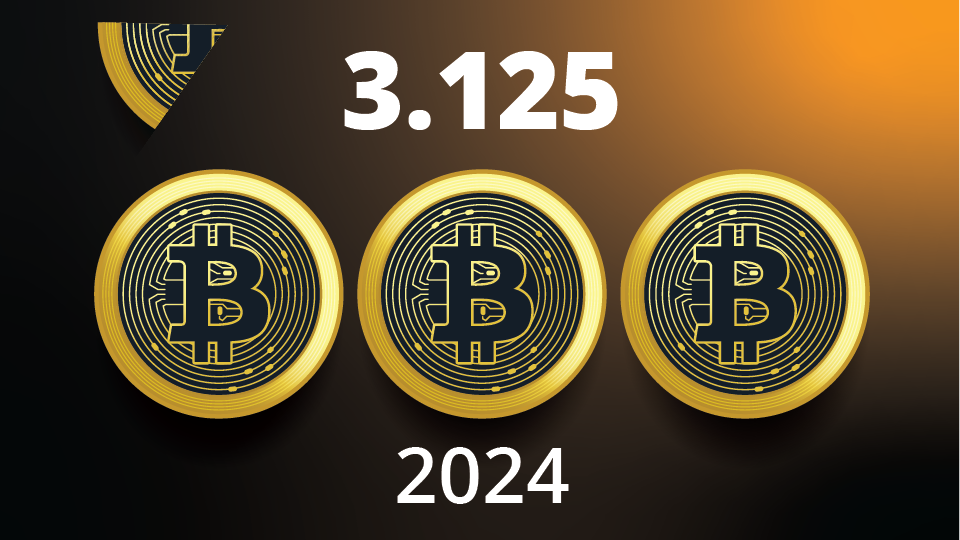11 Crypto Predictions for 2023
December 13, 2022
Read Time 10 MIN
Please note that VanEck may have a position(s) in the digital asset(s) described below.
Volatility is a given with crypto. The “crypto winter” stole most of the digital asset headlines throughout 2022, and the year is closing out with a spate of rapid collapses and bankruptcies. So is crypto done? Not by a longshot. We believe crypto’s financial disruption is here to stay. We explore why as we share here our top crypto predictions for 2023.
- Bitcoin will test $10-12K in Q1 amid a wave of miner bankruptcies, which will mark the low point of the crypto winter.
- In the second half of 2023, Bitcoin will rise to $30K. Lower inflation, easing energy concerns, a possible truce in Ukraine, and a turnaround in M2 supply will power the start of a new bull market.
- Financial institutions will tokenize more than $10B in off-chain assets.
- Brazil will emerge as one of the most crypto friendly countries of the world and tokenize a portion of sovereign debt offerings on blockchain.
- Twitter will bolster its payment offerings with state money licenses, competing more directly with Venmo and Cash App.
- A nation, most likely one dependent on oil exports, will announce it is adding Bitcoin and other digital assets to its sovereign wealth fund.
- A new decentralized stablecoin will reach $1B in market cap.
- Ripple will lose the SEC lawsuit.
- Gary Gensler will leave the SEC, as proposed legislation fails to gain wide support.
- Total web3 monthly gamers will rise from 2M to 20M as multiple triple-A games come to market.
- Ethereum will enable withdrawals from the Beacon Chain.
1. Bitcoin will test $10-12K in Q1 amid a wave of miner bankruptcies, which will mark the low point of the crypto winter.
The MVIS® Global Digital Assets Mining Index median market cap is now only $180M, with nearly all constituents burning cash and trading well below book value. With Bitcoin mining largely unprofitable given recent higher electricity prices and lower Bitcoin prices, we predict that many miners will restructure or merge. Ripple losing its SEC lawsuit (possible in Q1, more on this below) may coincide with this final downdraft, which would take out nearly the entirety of the post-2020 halving bull market.
2. In the second half of 2023, Bitcoin will rise to $30K. Lower inflation, easing energy concerns, a possible truce in Ukraine, and a turnaround in M2 supply will power the start of a new bull market.
Bitcoin and the broader crypto ecosystem have suffered through a brutal bear market in 2022. Numerous companies in the space have imploded and sentiment is quite poor. Bitcoin has traded like a risk asset over the prior year and has shown price sensitivity to interest rate hikes.
One reason why Bitcoin has reacted poorly to higher rates is that the political response to higher inflation in developed markets has been to attempt to cap energy prices, widen sanctions, and micro-manage economic activity to facilitate the “energy transition.” An end to the war in Ukraine would likely reverse at least some of these policies and make Bitcoin mining more politically palatable. On the other hand, the war is also creating a more economically integrated Eurasia with incentives to adopt novel payments methods for cross-border trade, as Russia and China are doing with the digital RMB and possible gold-for-oil swaps.
In developed markets, we think consumers will see Bitcoin act as a store of value over time and a hedge against M2 inflation rather than overt CPI inflation. In emerging markets, the focus is more on remittances and neutral alternatives to dollar hegemony.
Meanwhile, should our recession expectations materialize, the Federal Reserve would likely pause raising rates amidst softening inflation, while money printing and government budget deficits continue. Merely a lack of bad crypto-specific news, under the above scenario, could cause the price of Bitcoin to climb a wall of worry back to $30K again.
3. Financial institutions will tokenize more than $10B in off-chain assets.
Institutions will employ blockchains to simplify custody and settlement, while reducing costs for customers. KYC/AML will be enabled using identity protocols and permissioned sub-networks/applications. Already, MakerDAO has plans to deploy $1B into U.S. t-bills and other government securities with the help of BlackRock and Coinbase, allowing DAI holders to earn a higher yield on deposits.1 Real world loans on platforms such as Goldfinch, TrueFi, Maple and Clearpool sum to another $300M+. KKR has tokenized one of its private funds in partnership with Avalanche and Securitize. The Monetary Authority of Singapore’s Project Guardian is a collaborative initiative with the financial industry that seeks to test the feasibility of applications in asset tokenization and DeFi. MAS recently participated in transactions against liquidity pools comprising tokenized Singapore Government Securities, Japanese Government Bonds, Japanese Yen and Singapore Dollar.
Among open-source blockchains, we think Ethereum, Polygon, Avalanche, Polkadot and Cosmos are best positioned. We can also predict with high confidence that industry pioneer VanEck will originate real world assets on open-source blockchains in 2023.
4. Brazil will emerge as one of the most crypto friendly countries of the world and tokenize a portion of sovereign debt offerings on blockchain.
With persistent inflation and a young population, Latin America is seeing the fastest crypto and stablecoin adoption in the world. Brazilian regulators have been aggressive in giving private companies a sandbox to play in this area. Itau Unibanco, the country’s largest bank, plans to launch an asset tokenization platform to transform traditional financial products into tokens and offer custody services for clients. Tokenization of sovereign debt may begin in Brazil first.
5. Twitter will bolster its payment offerings with state money licenses, competing more directly with Venmo and Cash App.
Twitter’s current payment abilities are restricted to peer to peer tipping, including Bitcoin over the Lightning Network, but the user experience is poor. We expect Elon Musk to implement payments functionality more akin to WeChat Pay, which would let consumers pay merchants for services. In November, Twitter filed registration paperwork with the Treasury Department’s Financial Crimes Enforcement Network (finCEN) to pave the way for it to process payments, according to the New York Times. Such an endeavor is likely to include dollars, Bitcoin, and possibly other crypto assets like Dogecoin.
6. A nation, most likely one dependent on oil exports, will announce it is adding Bitcoin and other digital assets to its sovereign wealth fund.
We have heard first-hand from multiple crypto companies that Saudi Arabia’s sovereign wealth funds are already mining Bitcoin, though at small scale. In addition, Russian government officials have clearly stated intentions to settle cross-border trade in crypto assets. Russia’s largest bank Sberbank recently integrated its blockchain platform with MetaMask and the Ethereum blockchain. And multiple Russian media have also reported that Russians have been aggressively buying Bitcoin mining ASICS in November.
7. A new decentralized stablecoin will reach $1B in market cap.
A stablecoin is a digital currency that is pegged to a “stable” reserve asset like the U.S. dollar or gold. Stablecoin projects differ in how they maintain their peg. For example, USDT and USDC are both run by centralized entities who collateralize their tokens with fiat reserves, including cash and government treasuries. DAI, on the other hand, is administered by a decentralized entity whose users deposit ETH into smart contracts to mint the dollar-denominated, over-collateralized DAI. There are more than $5B in DAI outstanding as of 11/17/2022.2
Algorithmic stablecoins differ in the fact that they are collateralized with digital assets and either under- or over-collateralized. Typically, algorithmic stablecoins maintain their peg with the backing of another digital asset and/or an on-chain algorithm that balances supply and demand. Some applications of algorithmic stablecoins include: use in trading, using them to run Decentralized Autonomous Organizations (DAOs), and providing staking rewards to holders. We continue to observe considerable demand for a censorship resistant stablecoins, which cannot be seized by regulators.
Thus, despite the collapse of LUNA and its associated algorithmic stablecoin UST losing its peg, we see various decentralized stablecoins continuing to launch in 2023, including AAVE’s GHO offering, which will employ an overcollateralization strategy and rely on arbitrage and community-led monetary policy to stabilize the token at $1.
8. Ripple will lose the SEC lawsuit.
Ripple Labs has been engaged in a legal battle with the SEC since 2020 over their token, XRP. The SEC lawsuit alleges that XRP is an unregistered security. Considering the prominence of Ripple and XRP in the digital asset space, the result of this case could have far-reaching effects throughout the industry and set a precedent for future cases.
Ripple has the support of many large players in the industry, including Coinbase and Blockchain Association. This support has only increased, with 12 independent entities now offering legal support to Ripple. Both the SEC and Ripple have called for a summary judgement from a federal judge in the case, so a decision by end of Q1 is likely.
Unfortunately for crypto bulls, the SEC won its lawsuit against blockchain-based publishing company LBRY in November, with a U.S. district judge in New Hampshire writing that “nothing in the case law suggests that a token with both consumptive and speculative use cases cannot be sold as an investment contract.” With this case as precedent, we have lowered our probability of a Ripple victory materially. Ripple’s CEO has said the crypto company will move to another country if it loses. Significant financial penalties (disgorgement) are also possible.
9. Gary Gensler will leave the SEC, as proposed legislation fails to gain wide support.
Crypto enthusiasts had hoped that SEC Chairman Gary Gensler would be a proponent of advancing the digital assets ecosystem in the U.S. However, the SEC has continued to deny or postpone decisions on Bitcoin spot ETFs on grounds of “market manipulation”. Bizarrely, Bitcoin futures ETFs and even inverse Bitcoin futures ETFs have been approved.
Chairman Gensler has stated on several occasions that he considers Bitcoin to be a commodity, but most other digital assets to be securities. Still, considerable uncertainty remains in regard to which agency will regulate the industry, as the SEC and CFTC jockey over the right to regulate the space. That a spot Bitcoin ETF has been hostage of this dispute is unfortunate, given that proper guidance and regulation may have potentially prevented some of the crypto industry blow-ups from occurring in 2022. Specifically, Grayscale’s GBTC Bitcoin trust, which trades at a ~48% discount to NAV, sits at the center of questionable loans made by several market participants.
Thus, we see a rising probability that Chairman Gensler is replaced, now that the 2022 midterm elections have passed, as he faces increasing scrutiny that may become a political liability for the White House. Four U.S. lawmakers sent him a letter on November 8 deriding him for the SEC’s double standard when it comes to transparency. New York Democratic Rep. Ritchie Torres also wrote to the U.S. Comptroller in December requesting that the federal legislative watchdog conduct a review of the SEC’s failure to protect the public from “the egregious mismanagement and malfeasance of FTX.” The strongly worded letter also criticized Chairman Gensler’s leadership in general. Even the SEC’s union of 3,500 staffers is fighting the Chairman over pensions, returning to work and an overly stretched workforce.
Since 1934, the average tenure of an SEC chair is 2.75 years; the median is 2. Our predicted SEC victory over Ripple could provide a graceful face-saving exit.
10. Total web3 monthly gamers will rise from 2M to 20M as multiple triple-A games come to market.
The total addressable market (TAM) in traditional gaming is massive, at $300B and 3.2B people globally. Gaming is a digital-native activity, and in-game items (aka digital assets) are already being bought and used by hundreds of millions of gamers around the world. Still, we believe category gaps exist between traditional and crypto games, creating white space for growth. Specifically, blockchain-enabled games open up the possibility to transfer in-game assets between games, which does not currently exist.
That said, early play-to-earn and play-to-own games have lacked high quality production value and sufficiently large budgets to attract mass market users. A number of traditional “triple-A” games are aiming to fill that gap with tentpole releases in 2023. We think one of them is likely to go viral.
In defense of this prediction, we observe the traditional gaming industry increasingly excited about the potential of the future of web3. EA CEO Andrew Wilson recently called web3 “the future of our industry”. The sentiment is echoed by Ubisoft CEO Yves Guillemot, who stated that blockchain gaming is a “revolution” in the industry and who recently announced plans to develop blockchain games. Microsoft, whose Activision acquisition is now in jeopardy due to an FTC lawsuit, has also been investing in web3 startups as part of their exploration of the space.
Industry-wide, gaming companies have been hiring blockchain, NFT, and crypto experts as they search for the next evolution in gaming. With blockchain games and metaverse platforms on pace to attract $9B in venture capital investment this year, the chances of a breakthrough hit in 2023 are better than ever.
11. Ethereum will enable withdrawals from the Beacon Chain.
The Beacon Chain is the name of the pre-Merge, proof-of-stake Ethereum blockchain. It was created to ensure the proof-of-stake consensus logic was sound and sustainable before enabling it on the Ethereum Mainnet. The Merge took place in September of 2022, resulting in the Ethereum Mainnet merge with the Beacon Chain and transitioning to a singular blockchain with a proof-of-stake consensus mechanism. Stakers are currently receiving ~5% annual interest rates in return for committing ETH. However, withdrawals have not been enabled, potentially hindering adoption. Enabling Beacon Chain withdrawals would give stakers more confidence to commit capital to the protocol. The percentage % of ETH staked could potentially rise from ~13% to above 25%.
To receive more Digital Assets insights, sign up in our subscription center.
Related Topics
Related Insights
DISCLOSURES
1 Source: MakerDAO.
2 Source: Coinmarketcap.com.
Index Definition
The MVIS Global Digital Assets Mining Index (MVDAM) of the global digital asset mining segment. This is a modified market cap-weighted index, and only includes companies that generate at least 50% of their revenue from digital assets mining activities or mining related hardware, software or services, or projects that have the potential to generate at least 50% of their revenues from digital assets mining when developed. MVDAM covers at least 90% of the investable universe.
Coin Definitions
Bitcoin (BTC) is a decentralized digital currency, without a central bank or single administrator, that can be sent from user to user on the peer-to-peer bitcoin network without the need for intermediaries.
Ethereum (ETH) is a decentralized, open-source blockchain with smart contract functionality. Ether is the native cryptocurrency of the platform. Amongst cryptocurrencies, Ether is second only to Bitcoin in market capitalization.
MakerDAO (MKR) is the governance token of the MakerDAO and Maker Protocol — respectively a decentralized organization and a software platform, both based on the Ethereum blockchain — that allows users to issue and manage the DAI stablecoin.
Dai (DAI) is an Ethereum-based stablecoin (stable-price cryptocurrency) whose issuance and development is managed by the Maker Protocol and the MakerDAO decentralized autonomous organization.
Avalanche (AVAX) is an open-source platform for launching decentralized finance applications and enterprise blockchain deployments in one interoperable, scalable ecosystem.
Polygon (MATIC) is the first well-structured, easy-to-use platform for Ethereum scaling and infrastructure development. Its core component is Polygon SDK, a modular, flexible framework that supports building multiple types of applications.
Aave (AAVE) is an open-source and non-custodial protocol to earn interest on deposits and borrow assets with a variable or stable interest rate.
Uniswap (UNI) is a popular decentralized trading protocol, known for its role in facilitating automated trading of decentralized finance (DeFi) tokens.
Polkadot (DOT) is a sharded heterogeneous multi-chain architecture which enables external networks as well as customized layer one "parachains" to communicate, creating an interconnected internet of blockchains.
Cosmos (ATOM) is a cryptocurrency that powers an ecosystem of blockchains designed to scale and interoperate with each other. The team aims to "create an Internet of Blockchains, a network of blockchains able to communicate with each other in a decentralized way." Cosmos is a proof-of-stake chain. ATOM holders can stake their tokens in order to maintain the network and receive more ATOM as a reward.
Dogecoin (DOGE) is based on the popular "doge" Internet meme and features a Shiba Inu on its logo. The open-source digital currency was created by Billy Markus from Portland, Oregon and Jackson Palmer from Sydney, Australia, and was forked from Litecoin in December 2013.
USD Coin (USDC) is a stablecoin that is pegged to the U.S. dollar on a 1:1 basis.
Tether (USDT) is a stablecoin (stable-value cryptocurrency) that mirrors the price of the U.S. dollar, issued by a Hong Kong-based company Tether.
Please note that VanEck may offer investments products that invest in the asset class(es) or industries included in this commentary.
The views and opinions expressed are those of the author(s). Such commentaries are general in nature and should not be construed as investment advice. Opinions are subject to change with market conditions. Any discussion of specific cryptocurrencies mentioned in the commentaries is neither an offer to sell nor a solicitation to buy these cryptocurrencies.
This is not an offer to buy or sell, or a recommendation to buy or sell any of the cryptocurrencies mentioned herein. The information presented does not involve the rendering of personalized investment, financial, legal, or tax advice. Certain statements contained herein may constitute projections, forecasts and other forward looking statements, which do not reflect actual results, are valid as of the date of this communication and subject to change without notice. Information provided by third party sources are believed to be reliable and have not been independently verified for accuracy or completeness and cannot be guaranteed. VanEck does not guarantee the accuracy of third party data. The information herein represents the opinion of the author(s), but not necessarily those of VanEck or its employees.
Cryptocurrency is a digital representation of value that functions as a medium of exchange, a unit of account, or a store of value, but it does not have legal tender status. Cryptocurrencies are sometimes exchanged for U.S. dollars or other currencies around the world, but they are not generally backed or supported by any government or central bank. Their value is completely derived by market forces of supply and demand, and they are more volatile than traditional currencies. The value of cryptocurrency may be derived from the continued willingness of market participants to exchange fiat currency for cryptocurrency, which may result in the potential for permanent and total loss of value of a particular cryptocurrency should the market for that cryptocurrency disappear. Cryptocurrencies are not covered by either FDIC or SIPC insurance. Legislative and regulatory changes or actions at the state, federal, or international level may adversely affect the use, transfer, exchange, and value of cryptocurrency.
Investing in cryptocurrencies comes with a number of risks, including volatile market price swings or flash crashes, market manipulation, and cybersecurity risks. In addition, cryptocurrency markets and exchanges are not regulated with the same controls or customer protections available in equity, option, futures, or foreign exchange investing. There is no assurance that a person who accepts a cryptocurrency as payment today will continue to do so in the future.
Investors should conduct extensive research into the legitimacy of each individual cryptocurrency, including its platform, before investing. The features, functions, characteristics, operation, use and other properties of the specific cryptocurrency may be complex, technical, or difficult to understand or evaluate. The cryptocurrency may be vulnerable to attacks on the security, integrity or operation, including attacks using computing power sufficient to overwhelm the normal operation of the cryptocurrency’s blockchain or other underlying technology. Some cryptocurrency transactions will be deemed to be made when recorded on a public ledger, which is not necessarily the date or time that a transaction may have been initiated.
- Investors must have the financial ability, sophistication and willingness to bear the risks of an investment and a potential total loss of their entire investment in cryptocurrency.
- An investment in cryptocurrency is not suitable or desirable for all investors.
- Cryptocurrency has limited operating history or performance.
- Fees and expenses associated with a cryptocurrency investment may be substantial.
There may be risks posed by the lack of regulation for cryptocurrencies and any future regulatory developments could affect the viability and expansion of the use of cryptocurrencies.
Investors should conduct extensive research before investing in cryptocurrencies. Information provided by VanEck is not intended to be, nor should it be construed as financial, tax or legal advice. It is not a recommendation to buy or sell an interest in cryptocurrencies.
All investing is subject to risk, including the possible loss of the money you invest. As with any investment strategy, there is no guarantee that investment objectives will be met and investors may lose money. Diversification does not ensure a profit or protect against a loss in a declining market. Past performance is no guarantee of future results.
© Van Eck Securities Corporation, Distributor, a wholly owned subsidiary of Van Eck Associates Corporation.
Related Funds
DISCLOSURES
1 Source: MakerDAO.
2 Source: Coinmarketcap.com.
Index Definition
The MVIS Global Digital Assets Mining Index (MVDAM) of the global digital asset mining segment. This is a modified market cap-weighted index, and only includes companies that generate at least 50% of their revenue from digital assets mining activities or mining related hardware, software or services, or projects that have the potential to generate at least 50% of their revenues from digital assets mining when developed. MVDAM covers at least 90% of the investable universe.
Coin Definitions
Bitcoin (BTC) is a decentralized digital currency, without a central bank or single administrator, that can be sent from user to user on the peer-to-peer bitcoin network without the need for intermediaries.
Ethereum (ETH) is a decentralized, open-source blockchain with smart contract functionality. Ether is the native cryptocurrency of the platform. Amongst cryptocurrencies, Ether is second only to Bitcoin in market capitalization.
MakerDAO (MKR) is the governance token of the MakerDAO and Maker Protocol — respectively a decentralized organization and a software platform, both based on the Ethereum blockchain — that allows users to issue and manage the DAI stablecoin.
Dai (DAI) is an Ethereum-based stablecoin (stable-price cryptocurrency) whose issuance and development is managed by the Maker Protocol and the MakerDAO decentralized autonomous organization.
Avalanche (AVAX) is an open-source platform for launching decentralized finance applications and enterprise blockchain deployments in one interoperable, scalable ecosystem.
Polygon (MATIC) is the first well-structured, easy-to-use platform for Ethereum scaling and infrastructure development. Its core component is Polygon SDK, a modular, flexible framework that supports building multiple types of applications.
Aave (AAVE) is an open-source and non-custodial protocol to earn interest on deposits and borrow assets with a variable or stable interest rate.
Uniswap (UNI) is a popular decentralized trading protocol, known for its role in facilitating automated trading of decentralized finance (DeFi) tokens.
Polkadot (DOT) is a sharded heterogeneous multi-chain architecture which enables external networks as well as customized layer one "parachains" to communicate, creating an interconnected internet of blockchains.
Cosmos (ATOM) is a cryptocurrency that powers an ecosystem of blockchains designed to scale and interoperate with each other. The team aims to "create an Internet of Blockchains, a network of blockchains able to communicate with each other in a decentralized way." Cosmos is a proof-of-stake chain. ATOM holders can stake their tokens in order to maintain the network and receive more ATOM as a reward.
Dogecoin (DOGE) is based on the popular "doge" Internet meme and features a Shiba Inu on its logo. The open-source digital currency was created by Billy Markus from Portland, Oregon and Jackson Palmer from Sydney, Australia, and was forked from Litecoin in December 2013.
USD Coin (USDC) is a stablecoin that is pegged to the U.S. dollar on a 1:1 basis.
Tether (USDT) is a stablecoin (stable-value cryptocurrency) that mirrors the price of the U.S. dollar, issued by a Hong Kong-based company Tether.
Please note that VanEck may offer investments products that invest in the asset class(es) or industries included in this commentary.
The views and opinions expressed are those of the author(s). Such commentaries are general in nature and should not be construed as investment advice. Opinions are subject to change with market conditions. Any discussion of specific cryptocurrencies mentioned in the commentaries is neither an offer to sell nor a solicitation to buy these cryptocurrencies.
This is not an offer to buy or sell, or a recommendation to buy or sell any of the cryptocurrencies mentioned herein. The information presented does not involve the rendering of personalized investment, financial, legal, or tax advice. Certain statements contained herein may constitute projections, forecasts and other forward looking statements, which do not reflect actual results, are valid as of the date of this communication and subject to change without notice. Information provided by third party sources are believed to be reliable and have not been independently verified for accuracy or completeness and cannot be guaranteed. VanEck does not guarantee the accuracy of third party data. The information herein represents the opinion of the author(s), but not necessarily those of VanEck or its employees.
Cryptocurrency is a digital representation of value that functions as a medium of exchange, a unit of account, or a store of value, but it does not have legal tender status. Cryptocurrencies are sometimes exchanged for U.S. dollars or other currencies around the world, but they are not generally backed or supported by any government or central bank. Their value is completely derived by market forces of supply and demand, and they are more volatile than traditional currencies. The value of cryptocurrency may be derived from the continued willingness of market participants to exchange fiat currency for cryptocurrency, which may result in the potential for permanent and total loss of value of a particular cryptocurrency should the market for that cryptocurrency disappear. Cryptocurrencies are not covered by either FDIC or SIPC insurance. Legislative and regulatory changes or actions at the state, federal, or international level may adversely affect the use, transfer, exchange, and value of cryptocurrency.
Investing in cryptocurrencies comes with a number of risks, including volatile market price swings or flash crashes, market manipulation, and cybersecurity risks. In addition, cryptocurrency markets and exchanges are not regulated with the same controls or customer protections available in equity, option, futures, or foreign exchange investing. There is no assurance that a person who accepts a cryptocurrency as payment today will continue to do so in the future.
Investors should conduct extensive research into the legitimacy of each individual cryptocurrency, including its platform, before investing. The features, functions, characteristics, operation, use and other properties of the specific cryptocurrency may be complex, technical, or difficult to understand or evaluate. The cryptocurrency may be vulnerable to attacks on the security, integrity or operation, including attacks using computing power sufficient to overwhelm the normal operation of the cryptocurrency’s blockchain or other underlying technology. Some cryptocurrency transactions will be deemed to be made when recorded on a public ledger, which is not necessarily the date or time that a transaction may have been initiated.
- Investors must have the financial ability, sophistication and willingness to bear the risks of an investment and a potential total loss of their entire investment in cryptocurrency.
- An investment in cryptocurrency is not suitable or desirable for all investors.
- Cryptocurrency has limited operating history or performance.
- Fees and expenses associated with a cryptocurrency investment may be substantial.
There may be risks posed by the lack of regulation for cryptocurrencies and any future regulatory developments could affect the viability and expansion of the use of cryptocurrencies.
Investors should conduct extensive research before investing in cryptocurrencies. Information provided by VanEck is not intended to be, nor should it be construed as financial, tax or legal advice. It is not a recommendation to buy or sell an interest in cryptocurrencies.
All investing is subject to risk, including the possible loss of the money you invest. As with any investment strategy, there is no guarantee that investment objectives will be met and investors may lose money. Diversification does not ensure a profit or protect against a loss in a declining market. Past performance is no guarantee of future results.
© Van Eck Securities Corporation, Distributor, a wholly owned subsidiary of Van Eck Associates Corporation.




